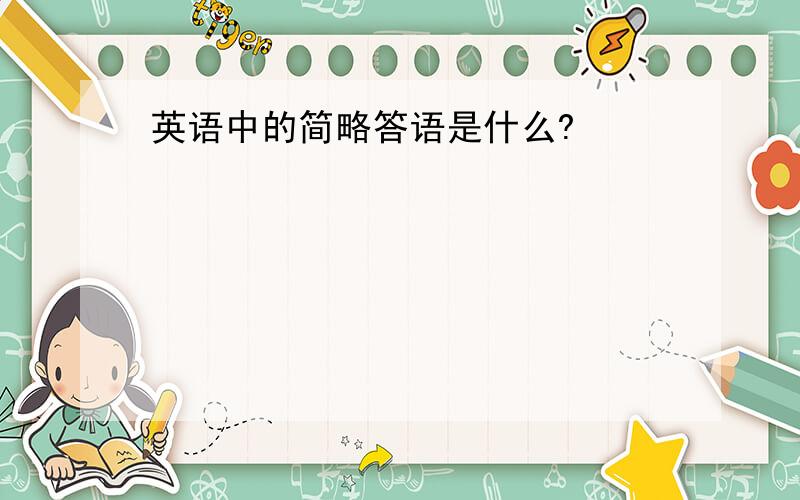英语中的简略答语是什么?
来源:学生作业帮助网 编辑:作业帮 时间:2024/11/27 23:53:51

英语中的简略答语是什么?
英语中的简略答语是什么?
英语中的简略答语是什么?
英语中的简略答语就是简略的省略的回答来取代繁琐的完整的回答以达到意思的表述.
比如讲:Are you Mr.Lee
完整的回答是:Yes,I am Mr.Lee.
简略答语是:Yes,I am.
这样就能很简略完整的表达意思.
使用简略答语应注意的几个问题
简略答语在英语中广泛运用,现将易出现错误的几点作一说明.
一、英语中,主语与助动词或动词be的缩写形式不能出现在句末.因此,在肯定的简略答语中,主语与助动词或系动词be不能缩写.如:
误:——Are you a student?
——Yes,I’m.
正:——Are you a student?
——Yes,I am.
二、以could、would和might开头的问句,常表达委婉语气,并不是真正的过去时.因此,在这类句子的简略答语中,如仍要保留情态动词,须将情态动词改用现在的形式.如:
误:——Could I go home this afternoon?
——Yes,you could.
正:——Could I go home this afternoon?
——Yes,you can.
三、通常情况下both和all用作同位语时,它们要放在情态动词,助动词及系动词be之后,但在简略答语中,both和all要放在上述词之前.如:
误:——Can you both answer the question?
——Yes,we can both.
正:——Can you both answer the question?
——Yes,we both can
四、在回答:How many/How much引起疑问句时,如是没有人或物,应用none,而不用no one;在回答who引起的疑问句时,如指没有人,应用no one,而不用none.如:
——How many people are there in the room?
——None.
——Who was late yesterday?
——No one.
五、在回答以下情态动词引起的问句时,如否定简答中要保留情态动词,may常变成mustn’t;must与need都变成needn’t不能一味地用原来词的否定形式.如:
误:——Must I go home now?
——No,you mustn’t.
正:——Must I go home now?
——No,you needn’t.
六、在简略答语中,let’s可以单独运用;而let us则不可.如:
误:——Shall we go swimming?
——Yes,let us.
正:——Shall we go swimming?
——Yes,let’s.
希望能帮到你和那些看到的人.